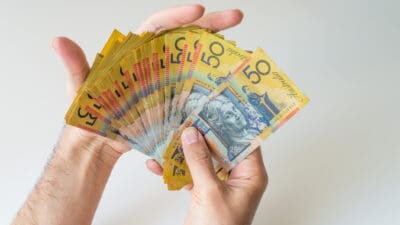Chances are you've heard the phrase 'safe as houses' when discussing investing options for Australian investors. I'd be equally certain thought that the phrase 'safe as ASX shares' is one that most people haven't heard.
The general consensus among the average Aussie investor is that property investing is safer than investing on the share market.
There's little doubt that investors appreciate the tangibility of houses, of being able to physically touch their own investment, to drive past it and to check on how it's going.
In stark contrast, shares offer little of that tangible, physical reassurance. In today's modern world, shares are a digital investment. You don't even get a hard copy of your investments these days when you buy shares.
But does this really mean that property is a safer investment than buying shares?
Property vs. shares – which is safer?
Well, unfortunately, there's no definitive answer here. Sure, property offers a tangibility that shares simply cannot match. But just because you are able to drive past a property does not inherently make it a safer investment than buying shares.
Both buying shares and buying property are afforded equal protection under the law. When you buy shares, you own a legal entitlement to the assets you've purchased, just as you do when you buy the title deed for a property.
So from this standpoint, there is no 'safety advantage' to property over shares.
The critics of share investing might point out that a company can go broke, dilute its shareholders out of a meaningful ownership stake of their company, or else wind themselves up.
But when you buy a property, you also face risks that a shareholder doesn't. When most investors purchase a house or a unit, they do so with the help of a bank or other financial lending institution. This means that if you don't make your mortgage repayments on time, the bank can take back your property.
What's more, your property can be compulsorily acquired by a government. It can encounter structural issues that could render it uninhabitable. It can get blown over in a storm, or burn down in a bushfire. There are plenty of risks that property owners face that just aren't present on the share market.
Which road to wealth to take?
The reality is that both share investing and property investing have their own set of unique risks and challenges. When many average Aussie investors think of investing in the share market, they assume it involves betting on a speculative mining or biotech company that could either explode in value, or go broke trying.
But most investors stick to buying blue chip stocks that, in reality, present very little risk of going broke. Does anyone seriously think that what we can call 'safe shares', the likes of Commonwealth Bank of Australia (ASX: CBA) or Woolworths Group Ltd (ASX: WOW), have a risk of bankruptcy?
Just as the investment prospects of buying a shack in the outback differ from a two-bedroom house in a capital city, there are wild differences in risk when it comes to share market investing.
At the end of the day, you can invest riskily on both the share market and the property market. But equally, plenty of investors have used either (or both) to build vast fortunes. There is no right answer when it comes to which is riskier – it all depends on how you approach them.









